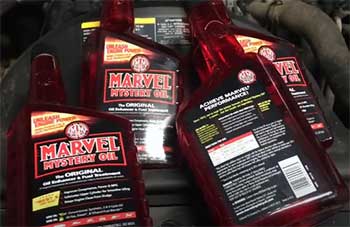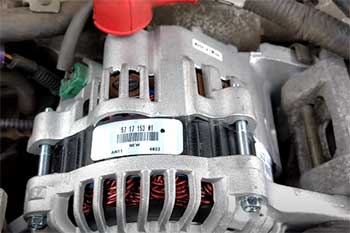I’ve spent years wrenching on cars, from my trusty old pickup to my buddy’s finicky sports car, and one thing I’ve learned is that not all oil filters are created equal.
Choosing between WIX and NAPA Gold filters can feel like picking a favorite child—you want the best for your engine, but the options seem so similar.
In this article, I’ll break down the pros, cons, and key features of both, giving you a clear picture to make an informed choice. Let’s get under the hood and figure out which filter deserves a spot in your engine bay.
A Brief Comparison Table
| Feature | WIX Oil Filter | NAPA Gold Oil Filter |
| Manufacturer | WIX (Mann & Hummel) | Previously WIX, now varies (Baldwin, others) |
| Filter Media | Cellulose, synthetic blends | Cellulose, some synthetic blends |
| Efficiency | 95% at 20 microns (standard models) | 95% at 20 microns (varies by model) |
| Anti-Drainback Valve | Silicone (premium models) | Silicone or nitrile (model-dependent) |
| Bypass Valve Design | Coil spring (most models) | Flat steel or coil spring (varies) |
| Build Quality | Robust metal canister, consistent | Solid, but recent quality concerns |
| Price Range | $5–$15 | $6–$15 |
| Made in | USA, Poland, others | USA, Mexico, Poland, others |
| Availability | Specialty stores, online | NAPA stores, widespread |
My Journey With Oil Filters
I remember the first time I changed my own oil—nervous, greasy, and a little proud. Back then, I grabbed whatever filter was cheapest at the auto parts store. Big mistake. A shoddy filter led to sludge buildup that cost me a weekend and a chunk of change to fix.
Since then, I’ve been obsessive about picking quality filters, and WIX and NAPA Gold have been on my radar for years. Both have stellar reputations, but I wanted to know: which one’s really worth my money?
Let’s break it down.
Understanding WIX Oil Filters
WIX has been a staple in the automotive world since the 1930s, and I’ve always admired their no-nonsense approach to filtration. Now owned by Mann & Hummel, a German filtration giant, WIX produces filters for everything from daily drivers to race cars.
Their oil filters come in standard, XP (synthetic media for extended intervals), and racing variants, each tailored to specific needs.
Key Features of WIX Filters
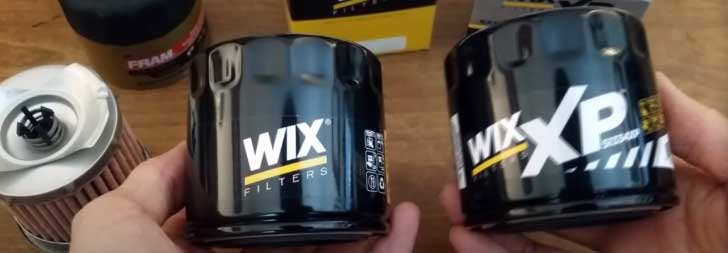
- Filter Media: WIX uses a blend of cellulose and synthetic fibers in most models. The XP line, my go-to for long oil change intervals, boasts fully synthetic media that traps smaller particles—down to 15 microns in some cases.
- Anti-Drainback Valve: Premium WIX filters use a silicone valve, which stays pliable in extreme temperatures, preventing dry starts. I’ve never had an issue with oil starvation using these.
- Bypass Valve: Most WIX filters feature a coil spring bypass valve, which I find more reliable than flat steel designs. It ensures oil flow even if the filter clogs, a lifesaver in high-performance engines.
- Build Quality: The metal canisters feel sturdy, with clean threading that screws on like a dream. I’ve cut open a few WIX filters after use, and the internals—pleated media, tight seals—always look top-notch.
Pros of WIX Filters
- Consistent Quality: Every WIX filter I’ve used feels like it was built with care. The threading, seals, and media are uniform, which gives me peace of mind.
- High Efficiency: With 95% efficiency at 20 microns (and better for XP models), WIX filters catch most contaminants, keeping my engine clean.
- Variety: From budget-friendly standard filters to high-end racing models, WIX has something for every vehicle. I love that I can pick a filter tailored to my driving style.
- Silicone Valves: That silicone anti-drainback valve is a game-changer, especially in cold climates where nitrile valves can stiffen.
- Made in the USA (Mostly): Many WIX filters are still made in the USA, though some come from Poland or other countries. I like supporting American manufacturing when I can.
Cons of WIX Filters
- Availability: WIX filters aren’t always on the shelf at every parts store. I’ve had to order online or hunt down a specialty shop, which can be a hassle.
- Price: WIX filters, especially the XP line, can cost a few bucks more than competitors. For my daily driver, I sometimes wonder if the premium is worth it.
- Smaller Filter Area in Compact Models: In smaller filters for newer Asian cars, the bypass valve takes up space, reducing the media area. This bugs me for high-revving engines where filtration is critical.
- Ownership Changes: Since Mann & Hummel bought WIX in 2016, I’ve heard whispers of cost-cutting. While I haven’t noticed a drop in quality, it’s something I keep an eye on.
Exploring NAPA Gold Oil Filters
NAPA Gold filters have long been a favorite among DIYers and pros alike, and I’ve used them on everything from my mom’s minivan to my cousin’s diesel truck. Historically made by WIX, NAPA Gold filters were essentially rebranded WIX units, but recent changes have stirred the pot.
Now, manufacturers like Baldwin and others have taken over some production, leading to questions about consistency.
Key Features of NAPA Gold Filters
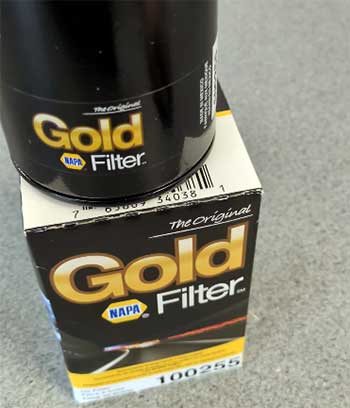
- Filter Media: Like WIX, NAPA Gold uses cellulose or synthetic blends. The Platinum line, which I’ve tried on my truck, features synthetic media for extended drain intervals, similar to WIX XP.
- Anti-Drainback Valve: Higher-end NAPA Gold models use silicone valves, but some lower-tier ones stick with nitrile, which can harden over time. I’ve noticed this in colder weather.
- Bypass Valve: Depending on the model, you’ll find either a coil spring or a flat steel bypass valve. I prefer the coil spring for reliability, but not all NAPA Golds have it.
- Build Quality: NAPA Gold filters generally feel solid, with robust canisters and decent threading. However, I’ve read recent reports of inconsistent quality, which makes me cautious.
Pros of NAPA Gold Filters
- Wide Availability: NAPA stores are everywhere, and I can usually grab a Gold filter without a hassle. This is a huge plus when I’m in a pinch.
- Solid Performance: With efficiency ratings similar to WIX (95% at 20 microns), NAPA Gold filters do a great job keeping oil clean. I’ve never had engine issues tied to these filters.
- Competitive Pricing: NAPA Gold filters are often priced comparably to WIX, sometimes a bit cheaper with store discounts. I’ve snagged them for as low as $6 during sales.
- Trusted Brand: NAPA’s reputation gives me confidence, and their warranty is a nice safety net if something goes wrong.
- Platinum Option: The Platinum line, with synthetic media, is great for synthetic oil users like me who push oil changes to 7,500 miles or more.
Cons of NAPA Gold Filters
- Manufacturer Uncertainty: Since WIX stopped making all NAPA Gold filters, I’m wary of who’s producing them now. Baldwin’s involved, but I’ve heard mixed reviews about their quality.
- Quality Concerns: Recent online chatter, like posts on Reddit and BobIsTheOilGuy, suggests some NAPA Gold filters have thinner media or weaker springs. I haven’t seen this myself, but it’s concerning.
- Inconsistent Valves: Not all NAPA Gold filters use silicone anti-drainback valves, and nitrile ones can fail in extreme conditions. This bugs me for winter driving.
- Country of Origin: Some NAPA Gold filters are made in Mexico or Poland, which isn’t a dealbreaker but makes me question consistency compared to USA-made WIX.
Head-to-Head Comparison of WIX And NAPA Gold Oil Filters
Now that I’ve laid out the basics, let’s put WIX and NAPA Gold head-to-head on the factors that matter most to me—and probably to you.
- Filtration Efficiency
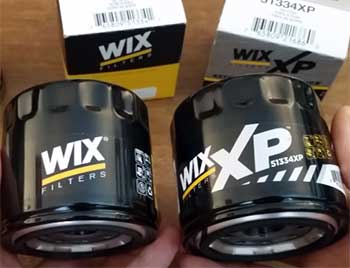
Both brands claim around 95% efficiency at 20 microns for their standard filters, which is solid for most vehicles.
WIX XP and NAPA Platinum push the envelope with synthetic media, sometimes hitting 15–18 microns.
I’ve cut open both after 5,000 miles, and the media looked equally packed with gunk, so they’re neck-and-neck here.
However, WIX’s consistency across models gives it a slight edge, especially since NAPA’s newer manufacturers raise questions.
- Build Quality and Durability
WIX filters feel like tanks. The canisters are thick, the threads are smooth, and the internals are meticulously assembled. I’ve dropped a WIX filter on my garage floor and it didn’t dent.
NAPA Gold filters are no slouches, but I’ve noticed some newer ones feel slightly lighter, and online reports of split canisters or collapsed media make me pause. My gut says WIX has the upper hand for durability, but older NAPA Golds (pre-2023) were just as tough.
- Anti-Drainback and Bypass Valves
The anti-drainback valve is a big deal for me, especially since I live in a cold climate. WIX’s silicone valves are consistently excellent, staying flexible even at -20°F.
NAPA Gold’s silicone valves are great when they’re used, but some models skimp with nitrile, which can crack or stick. For bypass valves, WIX’s coil spring design is more reliable than the flat steel in some NAPA Golds.
I’ve seen NAPA filters with coil springs, but it’s hit-or-miss. WIX wins this round.
- Price and Value
Pricing is where things get tricky. WIX filters range from $5 for basic models to $15 for XP or racing variants. NAPA Gold filters are similar, hovering between $6 and $15, with occasional deals bringing them down.
If I’m buying in bulk, NAPA’s store discounts can save me a few bucks, but WIX’s quality justifies the extra cost for my performance cars. For budget builds, NAPA Gold offers solid value, but I lean toward WIX for peace of mind.
- Availability and Convenience
NAPA Gold takes the crown here. With NAPA stores in nearly every town, I can grab a filter on my lunch break. WIX filters, while available online and at places like O’Reilly’s, often require a special order or a trip to a specialty shop.
If I’m in a rush, NAPA’s accessibility is a lifesaver, but I plan ahead for WIX when I can.
- Brand Trust and Warranty
Both brands have strong reputations, but WIX feels more like a specialist, focusing solely on filtration. NAPA, while trusted, is a broader auto parts brand, and their recent manufacturer switch makes me question their commitment to filters.
Both offer warranties, but I’ve never had to use them. WIX’s long history in filtration gives it a slight edge in my book.
Real-World Experiences of WIX And NAPA Gold Oil Filters
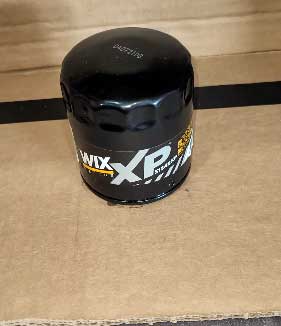
To get a fuller picture, I’ve talked to mechanics and scoured forums like BobIsTheOilGuy and Reddit.
My buddy Mike, a shop owner, swears by WIX for his customers’ cars, citing fewer returns and better oil analysis results.
He’s noticed NAPA Gold filters occasionally have looser pleats or thinner media since the manufacturer change.
On the flip side, my neighbor Sarah, who services her fleet of delivery vans, loves NAPA Gold for their availability and cost.
She hasn’t had issues, but she changes oil every 3,000 miles, so longevity isn’t a concern.
Online, opinions are split. A 2024 Reddit thread mentioned a NAPA Gold filter splitting open, while others praised their reliability. WIX gets more consistent love, though some users gripe about availability.
My own experience aligns with Mike—WIX feels like the safer bet, but NAPA Gold hasn’t let me down on my daily driver.
Which Filter Wins?
After weighing the pros and cons, I lean toward WIX for most applications. Their consistent quality, silicone valves, and robust bypass design make them a no-brainer for performance vehicles or harsh conditions.
If I’m pushing my car hard or running synthetic oil for 10,000 miles, WIX XP is my pick. NAPA Gold is still a strong contender, especially for budget-conscious folks or those needing a quick grab-and-go filter.
However, the uncertainty around their manufacturing and recent quality concerns tip the scales toward WIX.
That said, your choice depends on your needs. If you’re servicing a fleet and need filters fast, NAPA Gold’s availability and price are hard to beat. For a weekend warrior like me, who babies their car and wants the best, WIX delivers.
Either way, both are miles ahead of budget brands like Fram or MicroGard.
Frequently Asked Questions (FAQ)
Not anymore. NAPA Gold filters were historically made by WIX, but since around 2023, manufacturers like Baldwin and others have taken over. Some NAPA Golds may still resemble WIX, but they’re not identical.
No, most WIX filters are made in the USA or Poland. However, there have been rare reports of Chinese-made WIX filters, likely due to Mann & Hummel’s global supply chain.
WIX filters stand out for their consistent quality, silicone anti-drainback valves, and robust coil spring bypass design. They’re trusted for high efficiency and durability, especially in performance applications.
Many WIX filters are still made in the USA, particularly at their North Carolina plant. Some are produced in Poland or other countries, but USA-made filters remain common.
Conclusion: Your Engine, Your Choice
I’ve spent hours under the hood and online, comparing WIX and NAPA Gold filters, and here’s the deal: both are solid, but they serve slightly different needs. WIX is my pick for its rock-solid quality and performance, perfect for you if you’re serious about your engine’s health.
NAPA Gold is a great runner-up, especially if you value convenience and cost. Whichever you choose, you’re giving your car a fighting chance against wear and tear.
So, grab a wrench, pick your filter, and keep your engine humming—you’ve got this.
